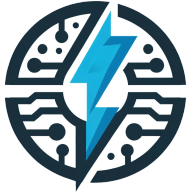The world is shifting towards renewable energy technologies, and engineers stand at the forefront of this transformation. This blog post will delve into the various renewable energy technologies that engineers are working with today. We'll explore the challenges, the opportunities, and the advancements that are shaping the future of energy.
Harnessing the Sun: Solar Energy Technologies
Solar energy is a cornerstone of renewable energy technologies. Engineers are constantly innovating to increase the efficiency and affordability of solar panels. Photovoltaic cells, which convert sunlight directly into electricity, are the most common type of solar technology.
However, engineers are also exploring concentrated solar power (CSP). This technology uses mirrors to focus sunlight onto a small area, typically a tower, to generate heat. This heat then drives a steam turbine connected to an electricity generator. CSP systems can store energy for use when the sun isn't shining, an advantage over traditional photovoltaic cells.
Solar energy technologies are not without their challenges. Engineers must grapple with issues of scalability, storage, and efficiency. However, advancements in materials science and nanotechnology are opening up new possibilities for solar energy.
Riding the Waves: Marine Energy Technologies
The ocean, with its constant motion, offers a vast and largely untapped source of renewable energy. Engineers are developing technologies to harness the power of waves and tides.
Wave energy converters capture the energy of ocean surface waves to generate electricity. Tidal stream generators, on the other hand, use the kinetic energy of moving water in tides, much like wind turbines use air movement.
Marine energy technologies face unique challenges. The harsh ocean environment can lead to high maintenance costs and technical difficulties. However, the potential rewards are significant. With further research and development, marine energy could become a major player in the renewable energy sector.
Catching the Wind: Wind Energy Technologies
Wind energy is one of the fastest-growing renewable energy technologies. Wind turbines, which convert the kinetic energy of the wind into electrical power, are becoming an increasingly common sight.
Engineers are working on both onshore and offshore wind farms. Offshore wind farms can generate more power due to stronger, more consistent winds at sea. However, they also present greater engineering challenges, from installation to maintenance.
Despite these challenges, advancements in wind energy technologies are promising. Engineers are developing larger, more efficient turbines and exploring innovative designs, such as vertical-axis turbines.
Tapping into the Earth: Geothermal Energy Technologies
Geothermal energy, harnessed from the heat within the Earth, is a reliable and constant source of power. Engineers use various technologies to tap into this energy, from geothermal power plants to ground-source heat pumps.
Geothermal power plants generate electricity by tapping into underground reservoirs of hot water or steam. Ground-source heat pumps, on the other hand, use the stable temperatures of the upper ten feet of the Earth's surface to heat and cool buildings.
Geothermal energy technologies face challenges in terms of location and resource availability. However, with advancements in drilling technologies and heat-to-power conversion, the future of geothermal energy looks bright.
Powering the Future: Energy Storage Technologies
Energy storage is a critical aspect of renewable energy technologies. Engineers are developing innovative solutions to store energy for when the sun doesn't shine or the wind doesn't blow.
Batteries, particularly lithium-ion batteries, are the most common form of energy storage. However, engineers are also exploring other technologies, such as pumped hydro storage, compressed air energy storage, and thermal storage.
Energy storage technologies face challenges in terms of capacity, efficiency, and cost. However, advancements in materials science and engineering design are paving the way for more effective and affordable energy storage solutions.
The Role of Engineers in Renewable Energy Technologies
Engineers play a crucial role in the development and implementation of renewable energy technologies. They design, test, and optimize these technologies, working to overcome challenges and push the boundaries of what's possible.
Engineers also play a key role in integrating renewable energy technologies into existing power grids. This involves addressing issues of variability and reliability, as well as developing smart grid technologies to manage energy supply and demand.
The work of engineers in this field is not only shaping the future of energy but also contributing to a more sustainable and resilient world.
Engineering a Sustainable Future with Renewable Energy Technologies
Renewable energy technologies offer a path towards a more sustainable and resilient energy future. Engineers are at the forefront of this revolution, developing innovative solutions to harness the power of the sun, wind, water, and earth. While challenges remain, the advancements and opportunities in this field are exciting. As we continue to innovate and push the boundaries of what's possible, we move closer to a future powered by renewable energy.

